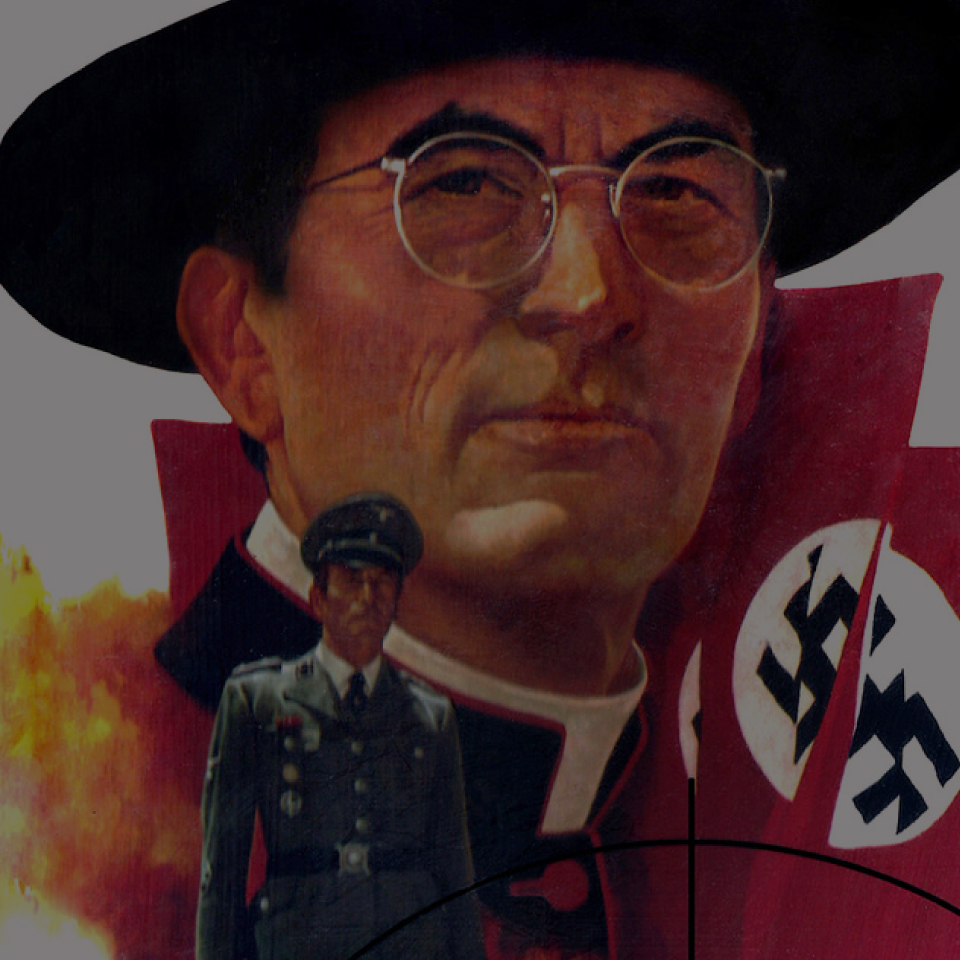If I may lift a lyric from Les Misérables (the musical), “The colors of the world / Are changing day by day.” Red and black. Those colors characterized Rome during the Nazi occupation. As The Scarlet and the Black opens, a red Nazi flag flies with a black swastika emblazoned in the center. Black-clad Gestapo officers with red swastika armbands march into the Vatican. But then we see that not only rage and hatred can co-opt red and black. For there, the Nazis find cardinals, bishops, and monsignori vested in their black cassocks and the scarlet colors of their offices.
This visual contrast sets up the conflict that dominates the film. As the Nazi occupiers attempt to capture Allied refugee soldiers and round up Rome’s Jewish population, they frequently find themselves foiled. An increasingly frantic SS commander, Herbert Kappler, played by Christopher Plummer of The Sound of Music fame, fails to catch his nemesis. Who is his nemesis, the man responsible for protecting and saving over six thousand escapees?
Although contained in the Vatican by German troops, the tough and charmingly witty Irish Monsignor Hugh O’Flaherty with a price on his head continued to sneak past the demarcating white line to coordinate operations. Concealing his identity with various disguises, O’Flaherty even dons a German officer’s uniform, confidently walking into a Nazi prison to visit a fellow priest.
This scene encapsulates what most defined O’Flaherty. He was a priest of Jesus Christ. In an earlier scene, he insisted that his organization was not a military resistance. He would not contribute to the killing but to the giving of life. And so, he risked his own capture, torture, and death in order to offer absolution to his brother priest. Kneeling beside him, O’Flaherty hands him a rosary to strengthen him before he is sent to a concentration camp. Together they pray the Hail Mary.
Mary plays a silent and subtle role in the film. The prison that O’Flaherty visits was once a convent and still bears its religious name, Regina Coeli. At key moments in the film, O’Flaherty prays before an image of the Queen of Heaven. Under her maternal protection, given to the Church by Our Lord as he hung upon the Cross, O’Flaherty tends the flock entrusted to him. In his efforts to save thousands, we can see a fulfillment of the promise, “I will give you shepherds after my own heart” (Jer. 3:15). Like the Good Shepherd who came to give us abundant life (John 10:10), the monsignor not only preserved the lives of many, but led them to a more abundant life. When we sadly hear of those shepherds who have exploited their flocks (Ezek. 34:2-10), it is good to see the grace of good shepherds that Our Lord sends to preserve his Church.
For his Church will endure forever. In a climatic scene, the two red-and-black-clad protagonists meet in the Colosseum. Kappler had thought his Reich would endure longer than the Roman Empire, outlasting all other nations and institutions. But amidst the ruins of a building symbolizing all the grandeur and pride of a fallen empire, he meets the representative of the Church that has survived the rise and fall of many. The Church, O’Flaherty tells Kappler, is still here after Rome had crumbled, and it will still be here after all memory of the Reich has faded.
Not sentimental yet powerful, not overly pious yet courageously faithful, The Scarlet and the Black tells this true story of clashing colors: so faded the failed black of the swastika with its red field of hatred, wiped out by the black wood of the Cross and red blood of Love’s life outpoured for ours.
This piece was originally written by: Br. Damian Day, O.P.
